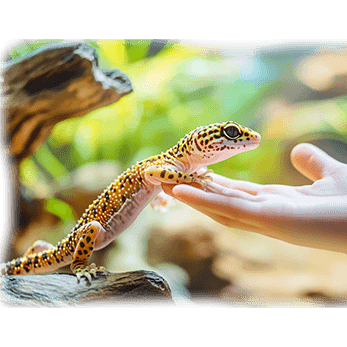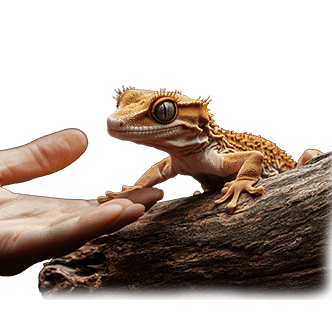How to Train and Handle Your Ball Python: A Comprehensive Guide for Beginners
Ball pythons are renowned for their calm and docile nature, making them ideal pets for both novice and experienced reptile enthusiasts. While they cannot be trained in the traditional sense like dogs, you can condition them to become comfortable with handling, establish feeding routines, and build trust. This comprehensive guide provides step-by-step instructions on safely handling your ball python, setting up consistent feeding schedules, and creating a stress-free environment to promote positive behavior.
Understanding Your Ball Python’s Behavior
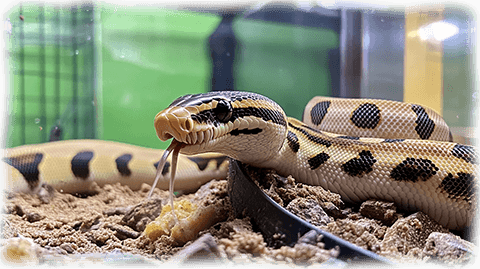
Before diving into training techniques, it’s crucial to understand your snake’s natural behavior:
- Shy and Defensive: Ball pythons are naturally shy and may curl into a ball when stressed or scared, a defense mechanism rather than aggression.
- Crepuscular Activity: These snakes are most active at dawn and dusk, making them more receptive to interaction during these times.
- Solitary Nature: Ball pythons are not social animals; interactions should focus on ensuring their comfort during handling.
Handling Your Ball Python
Proper handling is vital for conditioning your ball python to human interaction. Consistent and gentle handling can reduce stress and increase comfort over time.
- Start Slowly: Allow your ball python to acclimate to its enclosure for at least a week after bringing it home to adjust without feeling overwhelmed.
- Approach Gently: Always approach your snake from the side rather than from above to avoid triggering defensive behaviors.
- Support the Body: When picking up your snake, support its body with both hands—one under the midsection and the other near the tail—avoiding grabbing or squeezing.
- Short Handling Sessions: Begin with short handling sessions of 5-10 minutes, gradually increasing as your ball python becomes more comfortable. Avoid handling for more than 20-30 minutes at a time.
- Avoid Handling After Feeding: Refrain from handling your snake for at least 24 hours after feeding to prevent stress and potential regurgitation.
- Recognize Signs of Stress: If your ball python shows signs of stress, such as rapid tongue flicking or defensive postures, allow it time to calm down in its enclosure.
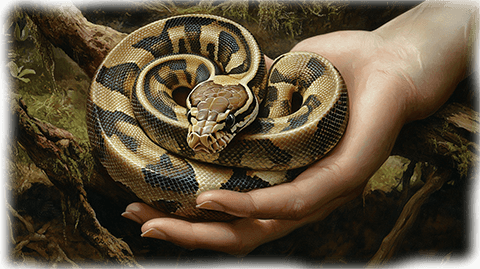
Feeding Routines and Training
Establishing a feeding routine is a key part of training your ball python. Consistent feeding schedules help your snake recognize when it’s time to eat, reducing food-related stress and aggression.
- Feeding Frequency: Feed juveniles once every 5-7 days and adults once every 7-14 days, depending on their size and age.
- Pre-Handling Feeding Cues – Some ball pythons may mistake handling for feeding time, especially if they’ve associated your presence with food. To prevent this, you can:
- Tap Training – Gently tap your ball python with a soft object (e.g., a snake hook) before handling (Amazon affiliate link). This signals that it’s time for handling, not feeding.
- Feed Outside the Enclosure – Feeding your ball python in a separate container can reduce the association between their enclosure and feeding, making handling less stressful.
Environmental Conditioning
The key to successfully training and handling a ball python is ensuring that its environment meets all of its needs. When your snake is comfortable in its surroundings, it will be more receptive to handling and less likely to exhibit stress-related behaviors.
- Temperature and Humidity – Ensure your ball python’s enclosure has a proper temperature gradient (75-80°F on the cool side, 88-92°F on the warm side) and humidity levels around 50-60%. Poor conditions can lead to stress and health issues like respiratory infections or improper shedding. (Amazon affiliate link)
- Hides and Enrichment: Provide at least two hides (one on the warm side and one on the cool side) and consider adding branches or rocks for enrichment.
- Light Cycle: Implement a regular day-night cycle, such as a 12-hour light cycle, to help regulate behavior and comfort levels.

Building Trust
Conditioning your ball python is about building trust through positive, stress-free interactions.
- Establish Routine: Handle your snake at consistent times, ideally during its naturally active periods (early morning or evening).
- Positive Interactions: Always ensure interactions are calm, gentle, and patient, helping your snake associate handling with safety rather than stress.
What Not to Do
- Avoid Overhandling: Excessive handling can stress your snake, especially when it’s young or newly acquired. Limit handling to 2-3 times per week, increasing only if your snake shows comfort.
- No Sudden Movements: Avoid quick, jerky movements when handling your ball python, as this can startle them and lead to defensive behavior.
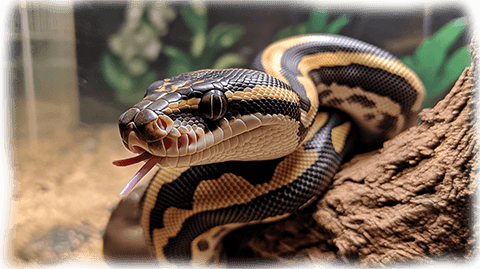
Resources for Further Learning
Ball pythons are fascinating creatures, and their care requires knowledge and attention to detail. Here are some additional resources to help you become an expert at caring for and training your snake:
- Books – “The Complete Guide to Ball Python Ownership and Care: Covering Morphs, Enclosures, Habitats, Feeding, Handling, Bonding, Health Care, Breeding, and Problem-Solving“ (Amazon affiliate link) by Zachary Freeman is a great resource for both beginner and advanced keepers.
- Websites – Check out Reptile Magazine for more articles on ball python care and handling techniques.
- Reptile Forums – Join communities like Ball-Pythons.net where experienced owners share tips and advice on snake care and training.
Final Thoughts
Conditioning your ball python revolves around trust and patience. By providing a safe, enriched environment and handling your snake regularly in a calm and consistent manner, you’ll build a positive relationship that makes handling easier for both you and your pet. Remember, each ball python has its own personality, and it may take time for them to adjust to regular handling. Stay patient, and you’ll have a calm, well-adjusted pet in no time!
Affiliate Disclosure
This post may contain affiliate links, which means I earn from purchases made through links. Please see the privacy policy page for more details.


